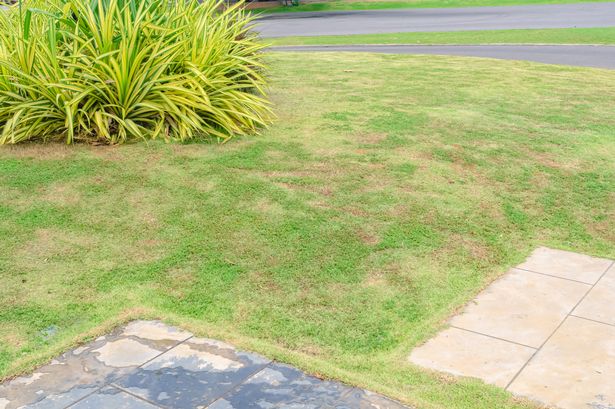The UK’s recent spate of sweltering weather may be leaving your lawn lacklustre – but Alan Titchmarsh recommends taking this approach when it comes to your garden Follow this tip if you’re experiencing patchy grass(Image: Getty Images)
Follow this tip if you’re experiencing patchy grass(Image: Getty Images)
As the weather continues to swelter, many British gardeners are struggling to keep their grass hydrated – however, there’s one rule they should adhere to.
While many of us are making the most of the ongoing heatwave, it hasn’t been great news for many plants. Since many UK wildlife and flora are adapted to cooler temperatures, they can struggle greatly in the heat. The same goes for grass, as many are realising that we may have taken our lush green pastures for granted.
It’s always sad seeing parts of your well cared for lawn turn brown and dry. But according to gardening expert Alan Titchmarsh, it’s not something to panic over.
 Brown patches on your grass may be part of a natural process(Image: Getty)READ MORE: Monty Don urges gardeners to focus on one plant struggling to flower in July
Brown patches on your grass may be part of a natural process(Image: Getty)READ MORE: Monty Don urges gardeners to focus on one plant struggling to flower in July
Instead, it’s better just to allow for some brown patches – which are to be expected given the extreme heat. Your garden will bounce back once cooler, wetter conditions inevitably return.
As reported by the Daily Mail, Alan Titchmarsh explained: “Don’t worry if an established lawn goes brown, it’s not dead. It will simply green up again when the rains come.”
Grass turns brown once its roots stop absorbing necessary nutrients from the soil. However, this doesn’t mean it’s dead, but rather entering a state of dormancy.
Similar to an animal hibernating over winter, grass turns brown as a way to conserve water and energy. In many cases, it will turn green again once more favourable conditions return.
If you want to check whether your grass is dead or dormant, you can always perform the ‘tug test’. This involves pulling at a handful of brown grass. If it comes out with little or no resistance, that means it’s dead.
 The ‘tug test’ will indicate whether grass is dead or dormant(Image: Getty Images)
The ‘tug test’ will indicate whether grass is dead or dormant(Image: Getty Images)
You can also conduct a test by watering your brown patches over several days. If they stay brown instead of turning green, they’re dead.
A helpful tip to avoid grass death or dormancy is to adjust the height of your lawn mower. It may seem counterintuitive, but cutting your grass too short can exacerbate the problem.
This is because longer grass has more surface area to photosynthesise. This in turn allows the plant to produce more food for itself, growing stronger and healthier.
It also creates more shade over the soil, reducing the rate of water evaporation. Equally, longer grass means longer and stronger roots, which offer it further protection.
Plus, another small bonus of keeping your grass longer is that it may encourage more butterflies to visit your garden. This is because they much prefer environments with grass of varying length.

